WHAT IF THERE WERE TWIN BOMBING CAMPAIGNS IN CALIFORNIA & NOBODY NOTICED?
March 7, 2023 by MICHAEL BOORMAN
Share this article:
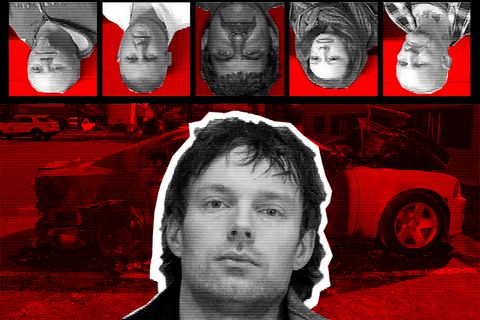
They couldn’t seem more different: a successful robotics engineer and happy family man in the heart of Silicon Valley, and a small circle of hard-bitten white supremacists gangsters in Fresno.
But cops in both cities swooped in to make arrests last week, alleging a series of bombings – not one series, but two, apparently unrelated. All the targets were small scale infrastructure or vehicles. Nobody was killed or injured in the bombings.
In San Jose, they arrested Peter Karasev, a Russian-born software engineer in his mid- 30s. He’s accused of using home-made bombs to destroy street-level electrical transformers around the city in December and January, and his home was described as being ‘full of explosives.’ He’s also charged with child endangerment and manufacture of methamphetamine. He was identified via location data from his phone.
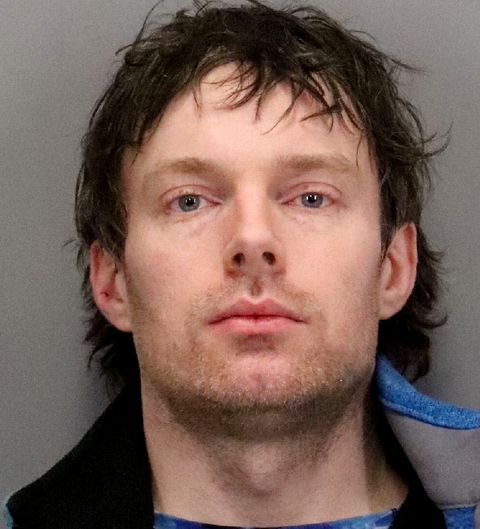
In Fresno, the police department announced the arrest of 5 people. Scott Anderson, 44, and Frank Rocha, 56, were arrested in Riverside county following a short manhunt. Anderson is accused of carrying out 7 bombings around Fresno and is suspected in more. Investigators said he set off pipe bombs to blow up multiple private vehicles as well as a mailbox and a marked probation office car. Rocha is suspected of being an accomplice. Anderson was also identified via his phone. Searches of his home and hangouts found numerous illegally possessed weapons and a collection of white supremacist decor. Paul New, 55, and Steven Burkett, 51, were both hit with multiple weapons charges. A 5th person, Amanda Sanders, 41, was charged with possession of methamphetamine for sale.

Despite numerous similarities in the two cases, there’s no indication that they were connected to each other. Karasev’s home meth lab was described as defunct, and he claims to have made the drug for personal use because of the unavailability of medical Adderall. His motives for the bombings are unclear. Anderson’s bombing campaign seems to have begun as retaliation for a stolen car, and escalated in scope, speed, and sophistication as he grew more confident. He worked with a single accomplice and the other 3 arrestees were associates of his; it’s not clear at present whether they were aware of his explosive antics. It’s also unclear what role ideology played. Both men carried out their activities late at night and took other steps to conceal their identities. Police did not notify the public, and so twin bombing campaigns went on in cities two hours’ drive apart without any media coverage.
SILICON VALLEY TECH BOOM ACCELERATING
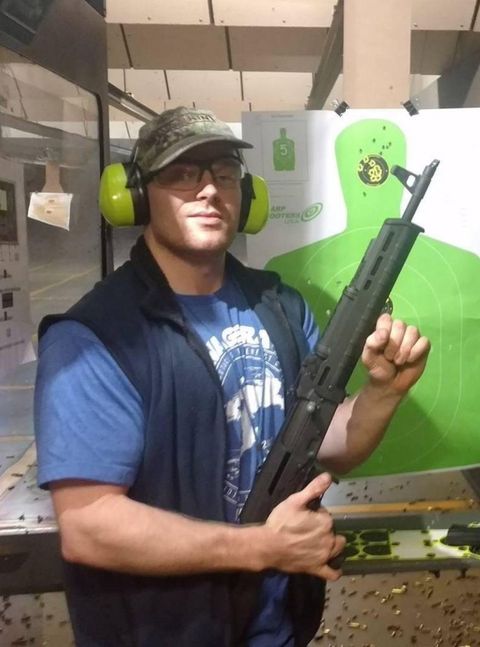
Peter Karasev was arrested at his home in San Jose. Police evacuated neighboring houses and technicians closed down the location for days, removing a ‘large quantity’ of explosives as well as meth manufacturing equipment. Karasev was charged with causing 2 explosions as well as child endangerment, due to the risks to his own children.
According to his Facebook profile, Karasev was born in Moscow, Russia, and is aged about 37. By 2005 he had moved to the US and was studying as an engineer. He went on to earn a master’s degree and a PhD, both at Georgia Tech, before moving to the Bay Area in 2018. Working as a research engineer at a string of global corporations including Agilent and Toyota, he specialized in machine learning and computer vision. His resume displays an impressive skillset and he quickly advanced to senior roles. His last career move was leaving Toyota to work for Zoox, a self-driving taxi firm owned by Amazon.
Karasev enjoyed fitness and competitive sports, from volleyball to obstacle races. He had a flourishing home life, with a pretty wife and 3 children to whom he appears devoted. His hard work was balanced with a comfortable lifestyle and large homes, despite the Bay Area’s sky-high real estate costs. But when interviewed after his arrest, Karasev said that all was not well with him. He claimed that he was deeply distressed by the war in Ukraine, as he had relatives there as well as in Russia. He also said he had manufactured methamphetamine for personal use due to increasing difficulty in obtaining medical Adderall, commonly prescribed for attention deficit disorder. The explosive materials in his home, he said, were related to his hobby of model rocketry – an excuse previously used by Atomwaffen member Brandon Russell to fool police in Florida.
But San Jose police allege that on December 8th of last year, Karasev left his home late at night and cycled to a Macy’s store in south San Jose. There, they say, he placed an explosive next an electrical transformer operated by Pacific Gas & Electric company (PG&E), which detonated around 2am. Minutes later, police say, Karasev was checking PG&E’s website for reports of electrical outages, as well as doing internet searches for ‘San Jose news’ and ‘shaped charge’ – a method of forming explosive materials to increase their impact.
PG&E crews responded, expecting to find a transformer that had leaked or overheated. But the damage they discovered at the site suggested some external cause. Because of the late hour and the commercial location, the interruption to electrical supply attracted little notice and was not reported by local news.
On January 5th, police say, Karasev struck again – this time at a strip mall in the southeast of the city, about 6 miles away from the first blast. Surveillance cameras in a Tesla vehicle captured an image of a man on a mountain bicycle minutes before an explosion that took place at 2:52am. PG&E workers commented to police that ‘the damage was in an inward direction,’ consistent with some external force. This second blast caused more damage, perhaps due to proximity with buildings. A dental office near the transformer had its windows blown out, although nobody was hurt.
Investigators were alarmed. Although the damage was slight, it came soon after a string of attacks on power stations, a tactic long preached by accelerationist groups. That worry had particular resonance in San Jose, close to the site of the Metcalfe power station attack in 2013.
Many criminal investigations begin with police checking their extensive network of automated license-plate readers, but with only some murky footage of a cyclist to go on, investigators instead looked into cell phone location data, consulting the logs for nearby towers. With traffic so light in the small hours of the morning, there were relatively few records to search, and only one cell phone – Peter Karasev’s – appeared near both locations around the time of the explosions. That led investigators to his home, where he was arrested last Wednesday. On Friday he was hit with 9 charges by the Santa Clara county DA – two counts each of igniting a destructive device and of interfering with electrical lines, one count of arson, one count of possessing bomb-making materials, and three counts of child endangerment.
Unsurprisingly, he was denied bail despite his attorney’s arguments that he had never been in trouble before and is a devoted family man. The judge didn’t buy this story and ordered Karasev held without bail. One likely factor is that Karasev was arrested in 2021 and charged with domestic violence and cruelty to a child, though the charges were later dismissed. His children have since been removed from the home.
DOWN IN THE VALLEY
About 100 miles to the east of San Jose, Fresno lies at the heart of California’s Central Valley. With a population of half a million sited in the most productive agricultural land in the country, Fresno is prosperous, but has more than its share of crime. The city also sits astride a lucrative smuggling route for meth and heroin, popular with gangs like the Aryan Brotherhood, Hell’s Angels, and Fresnecks (no, really).
The Fresno bombing story starts back in August of 2022. Scott Anderson and Amanda Sanders, his girlfriend, were staying at Anderson’s home when someone burglarized Sanders’ vehicle. Anderson and Sanders reported the burglary to the police. 5 months later, Anderson would set off two bombs targeting a nearby neighbor’s vehicle, seemingly act of revenge.
But retaliation may not have been the only motive. Search warrants obtained during the investigation revealed Anderson had made videos of several pipe bomb explosions beginning in November 2022. Those are still under investigation, although Anderson is now an obvious suspect.
Investigators are more sure of what happened next. On December 13th, Anderson and another man drove to an auto body shop in central Fresno, parking across the street to avoid security cameras. Anderson was shooting video on his cell phone, focused on a white truck in the body shop’s parking lot. Soon after they parked, the truck was rocked by 2 explosions that started a small fire under the vehicle before dying out.
The video didn’t end there. The men went on to discuss to the quality of the explosive, a firework combined with additional gunpowder. One man, probably Anderson, says he ‘only used 2 bottles’ for this explosion, adding that ‘if we had as much juice as we did last time, I think it would [catch fire]’. He goes on to recount his favorite methods of arson, bragging about his previous experience.
On January 6 2023, authorities say, Anderson was back in action – but nobody noticed. This time, the target was a Dodge Challenger parked in an apartment garage. The owner, away on business, lived just a few doors away from Anderson’s girlfriend in the same apartment complex. After smashing the back window of the Challenger, a small pipe bomb, only 3 inches long, was thrown inside – but the force of the explosion was barely enough to split one of the end caps open, and did no additional damage. The following morning, the owner’s roommate noticed the broken window, but not the pipe bomb inside the car. Believing it was simply vandalism, the roommate did not bother to call police.
Two days later, the bombers returned – this time, flinging a pipe bomb under the Challenger and speeding away. The loud explosion startled residents awake, and was powerful enough to fling debris almost 70 feet away. Surveillance cameras captured a silver sedan and a white pickup truck leaving the scene moments later. The silver sedan was a rental; subsequent investigation revealed that Anderson never used his own car for his bombing runs, preferring to rent a different one from the local airport once a month.
This time police were called. They soon discovered the dud bomb on the back seat of the Challenger. Realizing that the bomber was persistent, and suspecting the incident might be linked to other open cases, the next day they sought a ‘Geofence warrant’ – a controversial legal method to obtain location data for electronic devices in a specific area and time frame. After getting court approval, they sent the warrant to Google. Two weeks later, they had a lead.
Google had detected two devices – most likely cell phones – whose location and movements seemed to match the location of the explosion and footage from surveillance camera. Detectives then sought and obtained an additional warrant to gain more specific information on the location of the devices before and after the explosion. In criminal cases, investigators commonly make a series of incremental warrant applications rather than trying to get everything at once, as limited requests are less likely to be turned down by a court.
The results showed both devices at a Fresno address – Scott Anderson’s home – over an hour before the explosion, then leaving and traveling to the apartment complex. The devices were tracked right into the parking lot, pausing briefly just around the location of the bomb detonation before departing at speed immediately afterward. Then they traveled to another location in Fresno for a brief stop, before returning to Anderson’s home at 3.37am. The whole trip had taken under 90 minutes.
Detectives now applied for additional warrants to learn who owned the Google accounts connected with the devices. But before they received it, Anderson struck again.
Just after 2am on January 27th, Anderson returned to the body shop lot where he had bombed a truck on December 13. This time, a pipe bomb made with smokeless powder detonated under a dark sedan. Whether by accident or design, no fire took place and the bombing was not immediately noticed by anyone – except Anderson, who recorded another video of it on his phone. It’s not clear whether he had company on this second expedition. Police allege he set off an explosion in the mailbox of a masonry contractor the same day.
On January 31, Google handed over account information for the two cell phones. Investigators got their first clue that they were dealing with a white supremacist: gmail accounts for ‘wooods1488’ and ‘wooodpile559’. ‘Woods’ is a common abbreviation of ‘Peckerwoods,’ a subculture related to white nationalist prison gangs, collectively known as ‘the woodpile.’ 1488, as LCRW readers are doubtless aware, is a neo-Nazi code combining David Lane’s ’14 words’ statement of white nationalist aims with the phrase ‘Heil Hitler.’ ‘559’ is the local zipcode, as LCRW readers clarified for us.
Meanwhile, investigators drove by Anderson’s house and noticed Sanders’ car parked there. A check of the license plate revealed she was a close neighbor to the owner of the twice-bombed Dodge Challenger. A records search turned up the burglary report she and Anderson had made in August 2022. Now police had a motive for the apartment complex bombing.
Detectives filed and received yet another warrant application, this time for the contents of Anderson’s Google accounts from late December to mid- January. Monthly billing information confirmed Anderson’s name, address, and phone number, but the detectives soon realized they had something even better. Incredibly, Anderson had uploaded the videos of the bomb explosions in the parking lot of the auto body shop on December 13 and January 27 to his Google photos account. Now authorities had rock-solid evidence of two bombings, along with conversations admitting to multiple other bombings and explanations of the bomber’s technique.
Investigating the white truck seen in the December 13 video with the aid of bomb technicians, detectives found the remains of a mortar-style firework and a melted plastic bottle. That truck, and many of the vehicles parked on the lot, were wrecks there to be stripped for working parts as needed. It’s not clear whether Anderson had beef with the owners of the body shop; he may have simply used it as a convenient place to test out his skills, where a small fire might not attract much attention.
Detectives prepared yet another search warrant, to find out what else Anderson might have saved online. But before they could file it with the court, yet another bombing took place.
On February 19, security camera footage showed a silver sedan pulling into the parking lot of a home health services firm; a person got out long enough to throw a device under the trunk of a car. Moments later a fire ignited under the vehicle, followed by a violent explosion which wrecked the car and scorched the building nearby. In the background, the silver sedan can be seen doing a u-turn and speeding away. It’s unclear why Anderson might have targeted this business, but now the FBI became involved. The home help business had offices in Nevada and Arizona, and that made the bombing federal case.
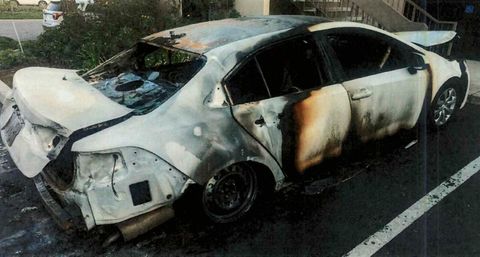
But Anderson was far from done. Just two days later, he struck again; by now he had it down to a routine. He pulled into another parking lot, threw another bomb under another car, and pulled away as it exploded – pausing on the street while he waited for the fire engine to arrive. But this time, he had raised the stakes – instead of an individual or business, his target was the Fresno County probation office, and he blew up a marked probation officer’s car.
Authorities were understandably alarmed, and moved to arrest Anderson – but not quickly enough. Guided by some sixth sense, he blew town on February 23, heading south to Riverside county. While Anderson had slipped through the net, he didn’t run far; police soon discovered he was hiding out at a casino in Temecula. The next day, Riverside County Sheriffs spotted him and conducted a traffic stop, arresting Anderson and another man, Frank Rocha.
Meanwhile, Fresno police searched Anderson’s and Amanda Sanders’ homes, as well as the house where Anderson and his partner had stopped on their way back from blowing up the Dodge Challenger.
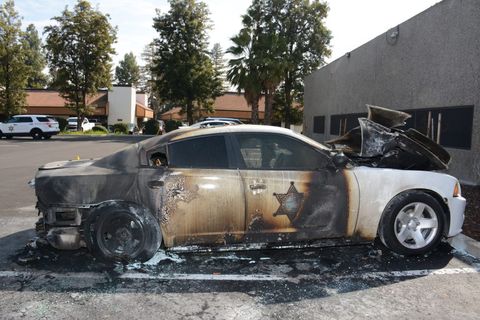
Evidence confirmed police suspicions that Sanders was Anderson’s girlfriend, and that Frank Rocha was his roommate. Like Anderson, Rocha had a prior felony conviction. In Anderson’s home, police found a .45 pistol and an AR15, which were not legal for either resident to possess. They also discovered 90 grams of methamphetamine, and charged Sanders with possession for sale. They found 3 handguns, 4 rifles, and 3 shotguns at the other property – possibly connected to the arrests of Paul New and Steven Burkett, although LCRW was unable to confirm this yet.
Most noticeably, the search revealed a huge cache of neo-Nazi swag, from flags and scarves with logos and slogans glorifying the SS to an astonishingly large number of Nazi-themed coffee cups.
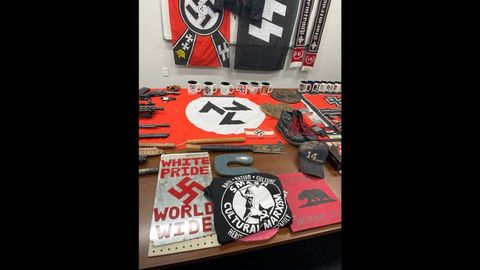
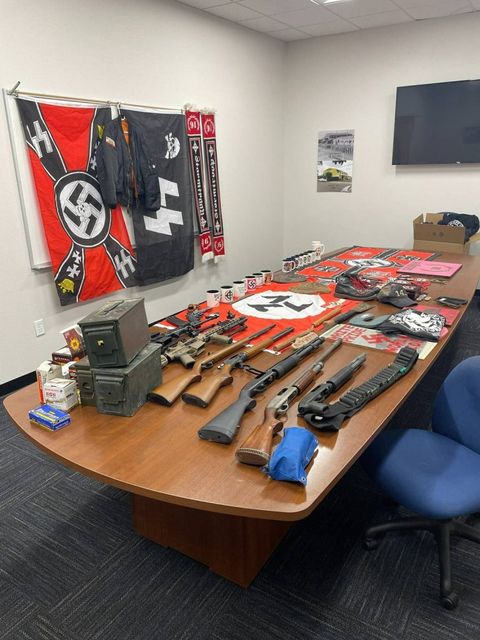
TIMELINE: DOUBLE TROUBLE
• November 2022: Scott Anderson carries 1 or more bombings around Fresno, exact dates unknown
• December 8: Peter Karasev blows up a transformer box outside a Macy’s in San Jose
• December 13: Anderson bombs a white pickup truck in the parking lot of a body shop
• January 5 2023: Karasev detonates a backpack at a strip mall in San Jose
• January 6: Anderson bombs a Dodge Challenger in an apartment garage, but the bomb doesn’t explode properly
• January 8: Anderson bombs the same vehicle, successfully this time
• January 27: Anderson detonates a device in a mailbox outside a contractor’s office
• January 27: Anderson sets off a small pipe bomb at the same body shop as the December 13 incident
• February 19: Anderson bombs a car in the parking lot of a home health nursing firm, destroying it
• February 21: Anderson blows up a marked parole officer car at a Fresno County Probation Office
Read more here.
SOMEBODY SET US UP THE BOMB
When we first heard about these cases, our first reaction was astonishment at two captures of serial bombers in the same week. That was followed by confusion at how so many bombings could have taken place without anyone noticing. As you’ve read, this was partly because the suspects apparently put some effort into covering their tracks – mostly operating late at night, targeting property rather than people, using a bicycle and rental vehicles to make surveillance more difficult.
But when we checked back into local news media, we were unable to find a single report of any incident prior to the arrests last week. Not one explosion was reported, nor any fires. While there are lot of small fires in a large city on any given day, it’s astonishing to us that multiple explosions could take place in a large city over a period of months and not make the news. We wish local news was better resourced, and we wish we had better resources and capacity to spot danger like this while it’s going on, rather than shaking our heads in astonishment afterwards.
MAKING SENSE OF IT ALL
This story is a little different because while it does involve some Nazis, their motives are unclear. It’s very possible that Anderson’s alleged bombing activities sprang out of an interpersonal beef or some sort of criminal rivalry, before expanding in scope as his bombing skills improved. But even if so, it didn’t take long to go from fucking up someone’s ride to bombing government property.
We can’t even guess what was going on with Peter Karasev: was he depressed and on drugs? A closet accelerationist? A Russian sleeper agent?! All three possibilities sound equally ridiculous, and yet equally plausible.
What we do know is that it’s increasingly easy for people to carry out attacks like this while remaining below the radar of public attention. Whatever the motivations turn out to be, the effect of bombing attacks like this is to accelerate the normalization of violence and instability that seems to mount daily. But don’t despair – prepare. Build out your real- world social networks, and keep your eyes and ears open to what’s going on in your community.

